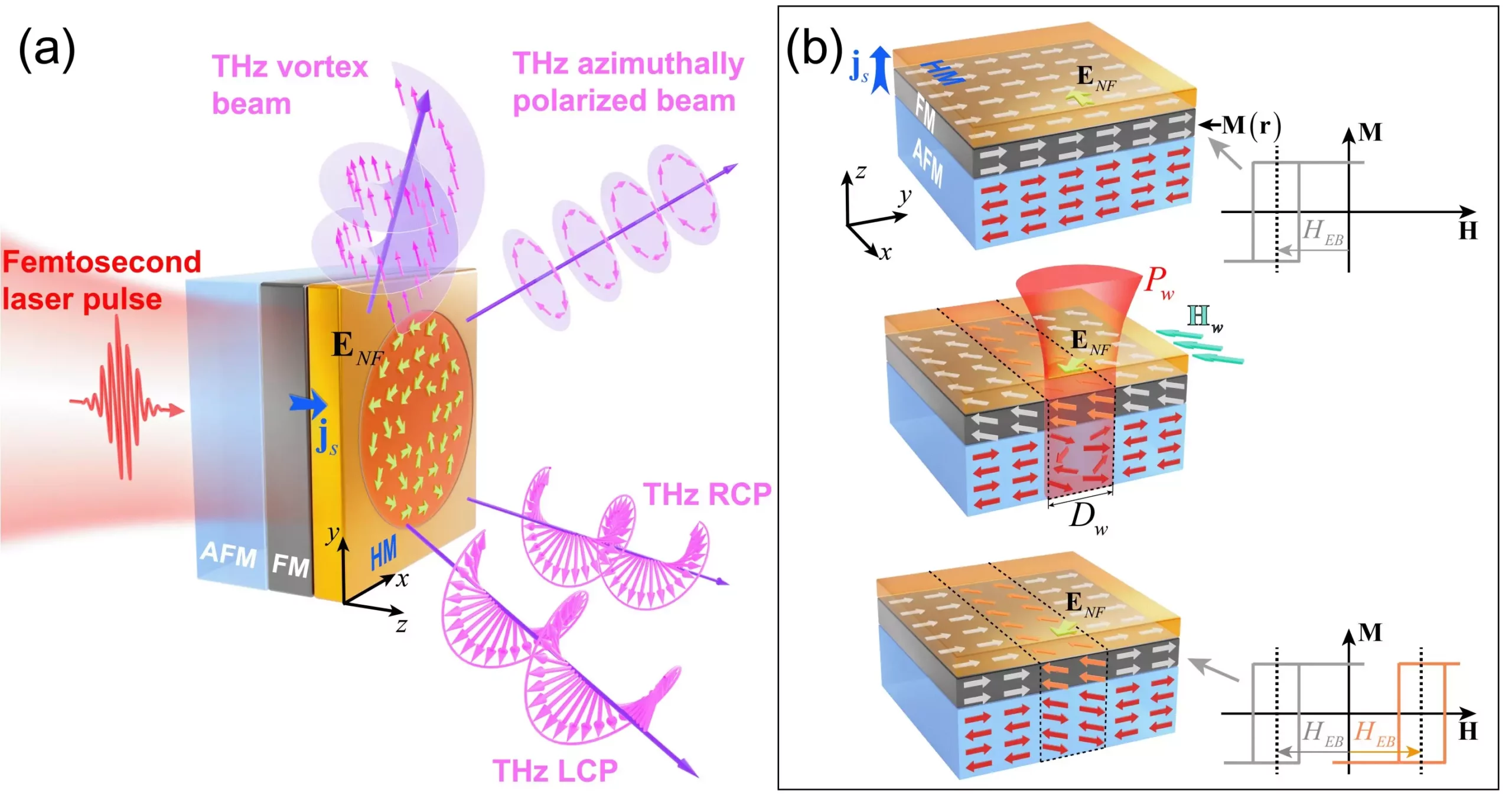The realm of terahertz technology is on the verge of a revolutionary breakthrough, thanks to a team of researchers who have unlocked unprecedented capabilities in generating structured terahertz light beams. This technological leap is not just an incremental improvement; it fundamentally redefines how we perceive and utilize terahertz radiation, which lies in a unique position between microwaves and infrared light. Historically, manipulating terahertz waves has faced significant hurdles, often haunting researchers with inefficiency and limited operational scope. However, the recent work spearheaded by experts like Prof. Zhensheng Tao and his colleagues presents an exciting landscape for applications across numerous fields—from security scanning to medical diagnostics and high-speed data transmission.
The Mechanism Behind the Breakthrough
Central to this advancement are programmable spintronic emitters, which are sophisticated devices crafted from a blend of magnetic and non-magnetic materials. These components work in harmony, converting spin-polarized currents induced by lasers into expansive terahertz radiation. Unlike conventional methods, which lack flexibility and precision, these innovative emitters allow researchers to manipulate the magnetization patterns within them with exceptional accuracy. As the first author Shunjia Wang articulates, this precision facilitates the generation of terahertz beams featuring a staggering array of complex polarization states.
The significance of this precision cannot be overstated. The ability to create beams that include separated circular polarizations or uniquely configured azimuthal and radial polarization states opens a plethora of new possibilities. Intriguingly, these emitters can even produce the elusive Poincaré beam, which encapsulates all possible states of light polarization within its cross-section. Such versatility is not merely academic; it translates into real-world applications that could transform how we interact with light and embark on scientific discoveries.
Applications with Wide-Reaching Impact
The implications of this research stretch far and wide. In practical applications, terahertz radiation is already making strides in multiple sectors. Security scanners utilize these frequencies to detect concealed threats, while medical imaging could greatly benefit from the nuanced capabilities made possible by this technology. Moreover, the potential for enhanced communication speeds in ultrafast data networks is a tantalizing prospect that could reshape our digital landscapes.
Significantly, the ability to create structured terahertz beams opens avenues for developing novel terahertz devices that boast enhanced functionalities. The versatility in manipulating light not only enhances existing technologies but also lays the groundwork for innovations that we have yet to imagine. Researchers are already enthusiastic about the unfolding possibilities.
A Clarion Call for Future Research
While this advancement presents a gleaming beacon of hope, it also underscores the need for further exploration and investment into terahertz technologies. The transition from theory to practical application will require sustained collaborative efforts within the scientific community, as well as partnerships with industries that stand to benefit from these advancements. As the researchers wisely note, this breakthrough paves the way forward, and it is our responsibility as a global community to embrace and cultivate the immense potential of this technology. As we stand on the cusp of new frontiers in terahertz innovation, the sky is truly the limit.


Leave a Reply